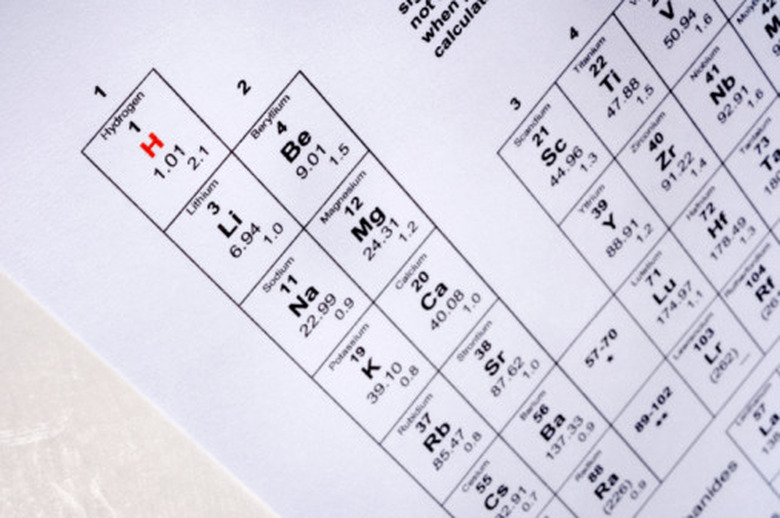What Are Representative Particles Of Elements?
A representative particle is the smallest unit of a substance that can be broken down without altering the composition. Matter is composed of three types of representative particles: atoms, molecules and formula units.
Atoms and Elements
Atoms and Elements
Atoms are the smallest particle that can be split. Substances that contain only one kind of atom are called elements.
Molecules
Molecules
The molecule is the representative particle of molecular compounds. It is also the representative particle of diatomic elements.
Formula Unit
Formula Unit
The representative particle of an ionic compound is the formula unit. A formula unit uses a formula to calculate the basic whole number ratio of the ions in an ionic compound.
Diatomic Elements
Diatomic Elements
Diatomic elements, or molecules, are made up of two atoms of the same element. These diatomic elements are not part of a compound.
Cite This Article
MLA
Shepperson, Joy. "What Are Representative Particles Of Elements?" sciencing.com, https://www.sciencing.com/representative-particles-elements-8173916/. 24 April 2017.
APA
Shepperson, Joy. (2017, April 24). What Are Representative Particles Of Elements?. sciencing.com. Retrieved from https://www.sciencing.com/representative-particles-elements-8173916/
Chicago
Shepperson, Joy. What Are Representative Particles Of Elements? last modified March 24, 2022. https://www.sciencing.com/representative-particles-elements-8173916/
